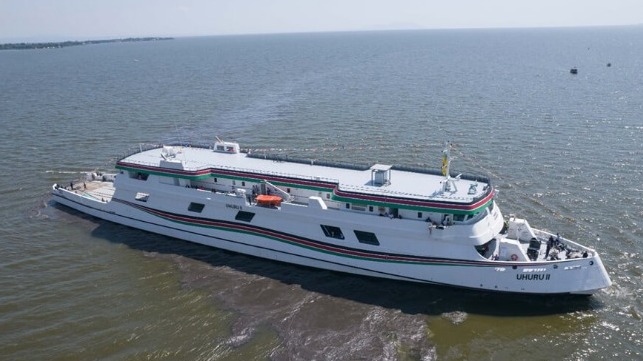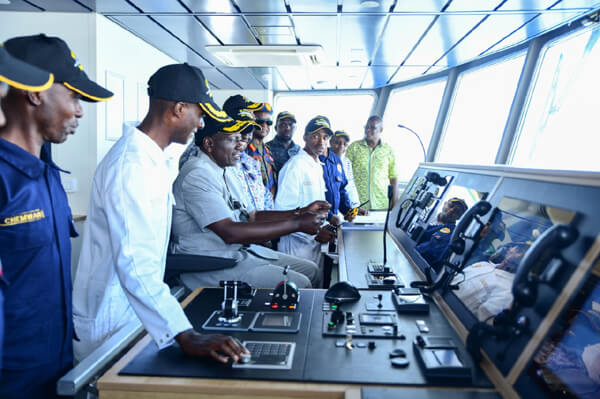Kenya’s First Locally Built Cargo Ship Enters Service on Lake Victoria

Kenya marked a milestone in its ambitions to increase trade and expand its capabilities in shipbuilding and repair. The country celebrated the commissioning of its first domestically-built ship, the Uhuru II which will operate on Lake Victoria transporting dry cargo and fuel. Officials are hailing the vessel as a key step to meet the high demand for freight services within the lake region, a demand being driven by increased intra-region trade across the East Africa Community (EAC).
The 328-foot ship was built by the military-controlled Kenya Shipyards Limited in partnership with the Dutch shipbuilder Damen Shipyards as the first commercial cargo ship ever built in Kenya. Construction began on May 29, 2021, with the shipyard highlighting that it was able to complete the construction in 24 months despite the complexity of the design and its first building effort. Kenya Shipyards mostly does maintenance work for the military.
Uhuru II is capable of transporting 1,063 tonnes of cargo and is optimized for the transportation of petroleum oil products, up to two million liters of crude oil per trip, as well as bulk dry cargo such as cereals, fertilizers, sugar, and seeds. The vessel is equipped with Caterpillar 3500 series four-stroke, V-type, turbocharged marine diesel engines that the builders said are well suited for the demands of commercial shipping. The ship has a cruising speed of 14 knots.
Constructed at a cost of $20 million, the shipyard and government are reporting that they were able to save $10.8 million versus an international project. They note the savings would have otherwise been spent on imports. They are also saying they were able to shorten construction time by a third by building the ship domestically.

Kenya's president commissioned the ship and took a tour of the bridge
“MV Uhuru II before us is not only a means of transportation, but also a catalyst for economic growth and development in our region,” said Kenyan President William Ruto during the commissioning on October 9. “It will facilitate trade, create jobs, and open up opportunities for businesses to thrive.”
The commissioning of the ferry comes when intra-regional trade within the seven EAC partner states is on an upward trajectory, standing at $10.1 billion in 2022, up from $9.5 billion in 2021. The region is determined to further drive trade by streamlining goods transportation and eliminating bottlenecks including non-tariff barriers.
She will operate alongside the 1966-built 1,260-tonne MV Uhuru, which is currently ferrying goods, mainly petroleum products, to neighboring Uganda.

that matters most
Get the latest maritime news delivered to your inbox daily.
Officials also highlighted the success of a new jetty built in Kisumu specifically to facilitate the oil business. Since starting operation earlier this year, they are reporting that five trips have been operating transporting 20 million liters of fuel to Uganda.
Based on the success, Kenya has already announced plans to build three more ships. They will also be used for oil exports through Lake Victoria.
